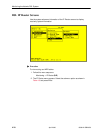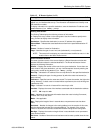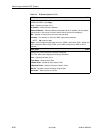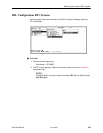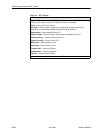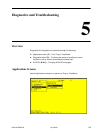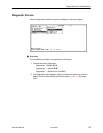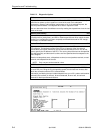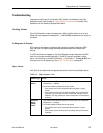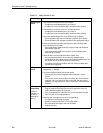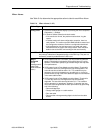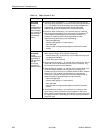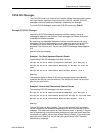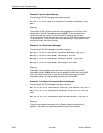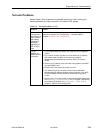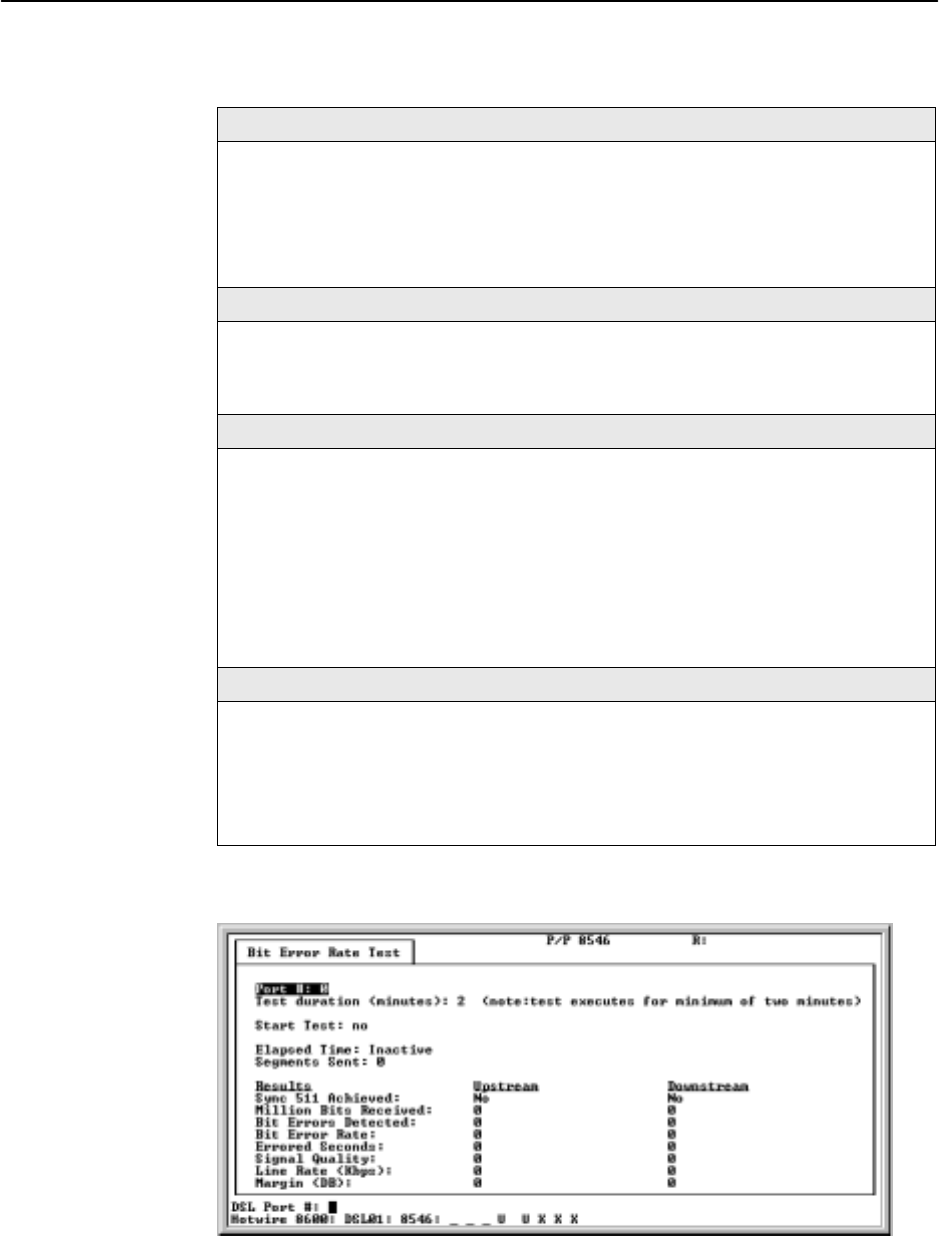
Diagnostics and Troubleshooting
5-4
8000-A2-GB20-50
April 2000
Table 5-2. Diagnostics Options
Selftest D-A
Displays the results of the last disruptive selftest of the DSL card. This selftest is only
performed on power up of the system or a reset of the card. Each subsystem
(processors, memory, and interfaces) reports pass or fail. If all subsystems pass, the
card has passed selftest. If a subsystem fails, reset or replace the card.
You can determine when the selftest occurred by reading the elapsed time since the last
reset on the card.
Alarms (Card Alarms) D-B
Displays all active card alarm conditions. Major alarms include Selftest failure,
Processor failure (sanity timer), and DSL or Ethernet port failures. Minor alarms include
Config Error (configuration has been corrupted) and threshold exceed for DSL margin,
Error Rate, or Link Down events.
Packet Echo Test D-C
Allows you to conduct a nondisruptive packet test between the DSL card and Hotwire
RTU endpoint. Test packets are sent to the RTU at 10 percent of the line rate and
echoed back to this card, where they are counted and checked for errors. You do not
have to specify the IP address of the RTU. The running time of the test can be specified
(5 to 900 seconds), and the test will continue until the specified time has elapsed or the
test is stopped.
Results include packets sent, valid packets received, errored packets received, errored
seconds, and elapsed time of the test.
NOTE: Only one port can be tested at a time.
BERT Test D-D
For Model 8546 only. Allows you to conduct a nonstoppable, disruptive 511 BERT Test
on each DSL port. Using the current operating speed, the test lasts two minutes, after
which the connection with the RTU is disconnected.
Information provided by the test includes elapsed time, sync of 511 pattern achieved/not
achieved, bits received (in millions), bit errors detected, bit error rate, and errored
seconds for both up and down directions.



